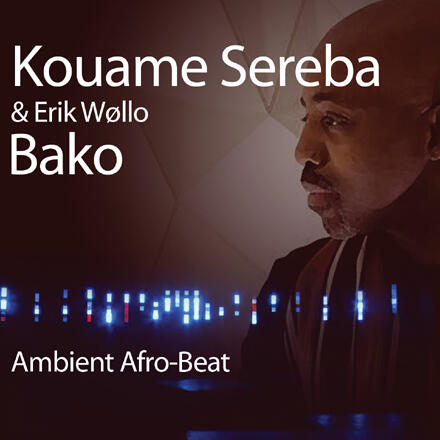Since the release of Kouame Sereba's solo album “Kilimanjaro” in 1992, Kouame has become an established name among Norwegian musicians. A folk musician and multi-instrumentalist from the African Ivory Coast, Kouame has attracted attention on musical occasions in the company of Kirsten Bråten Berg, Dozo, Zikalo and British story-teller James Blake, to name a few. In 2009 he received the acclaimed Folkelarm Prize and was proclaimed “Folk Musician of the Year”.
“Bako” is a sequel to “Kilimanjaro” and as previously, Erik Wøllo is a significant part of the project, responsible for production and musical arrangements. Wøllo participates also as a musician on guitar and various electronic instruments. In “Bako”, West African music is combined with a modern electronic sound, with emphasis on an organic feeling and atmosphere. We suggest “Ambient Afrobeat” as a good name for this new World Music genre, in which African impulses are blended with newer musical expression and ambience. Kouame’s first album contained some of this, but in “Bako” it comes to the fore. Few other musicians have cultivated this type of mix and combined vocals, text and instrumental arrangements into an appealing, sophisticated whole.
African music is most commonly associated with rhythm, festivity and color. “Bako”, however, provides storytelling and a deeper, contemplative expression in which rhythm has an integral part. This is the nachspiel music of the wee-hours, with a tinge of serious depth and insight.
“Bako” is a sequel to “Kilimanjaro” and as previously, Erik Wøllo is a significant part of the project, responsible for production and musical arrangements. Wøllo participates also as a musician on guitar and various electronic instruments. In “Bako”, West African music is combined with a modern electronic sound, with emphasis on an organic feeling and atmosphere. We suggest “Ambient Afrobeat” as a good name for this new World Music genre, in which African impulses are blended with newer musical expression and ambience. Kouame’s first album contained some of this, but in “Bako” it comes to the fore. Few other musicians have cultivated this type of mix and combined vocals, text and instrumental arrangements into an appealing, sophisticated whole.
African music is most commonly associated with rhythm, festivity and color. “Bako”, however, provides storytelling and a deeper, contemplative expression in which rhythm has an integral part. This is the nachspiel music of the wee-hours, with a tinge of serious depth and insight.


